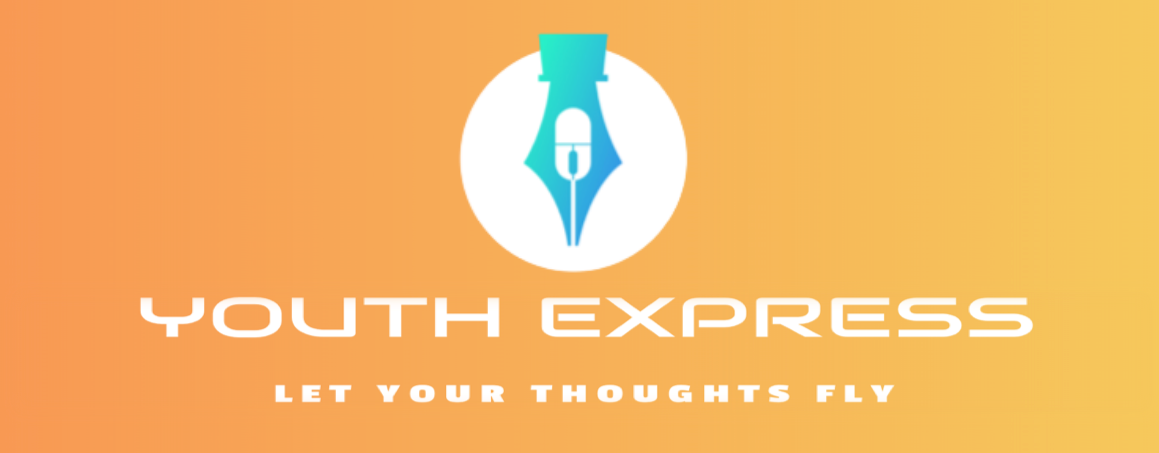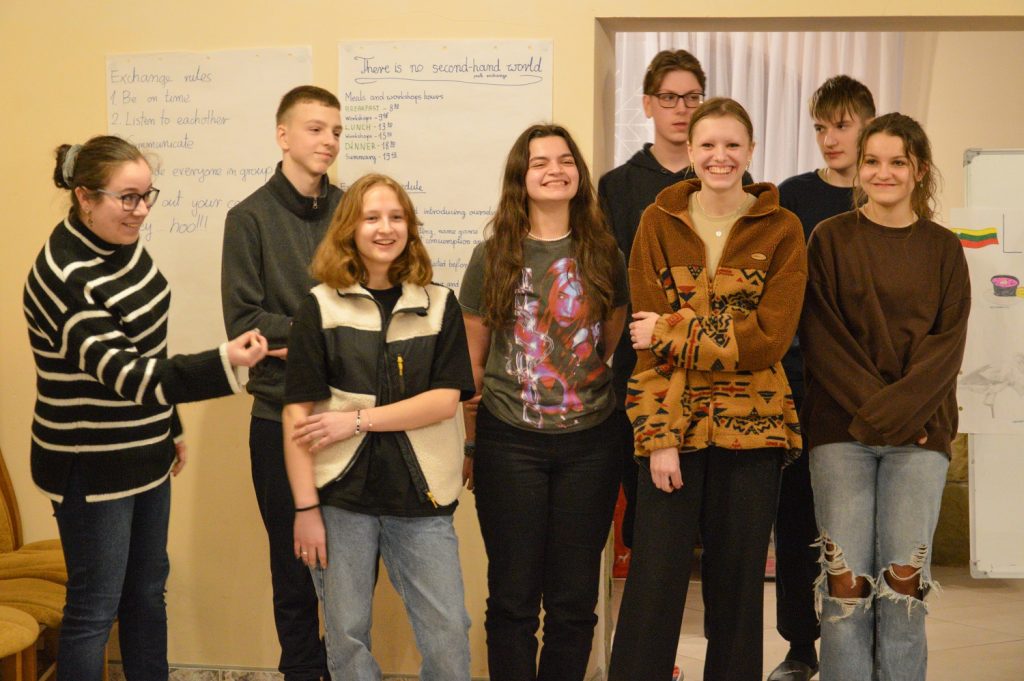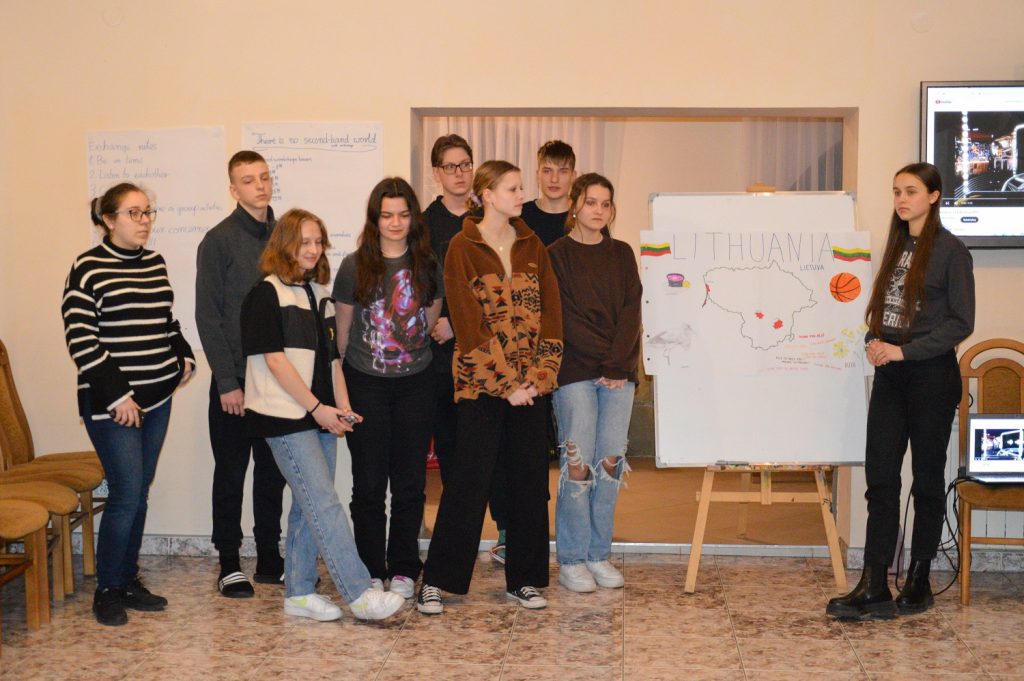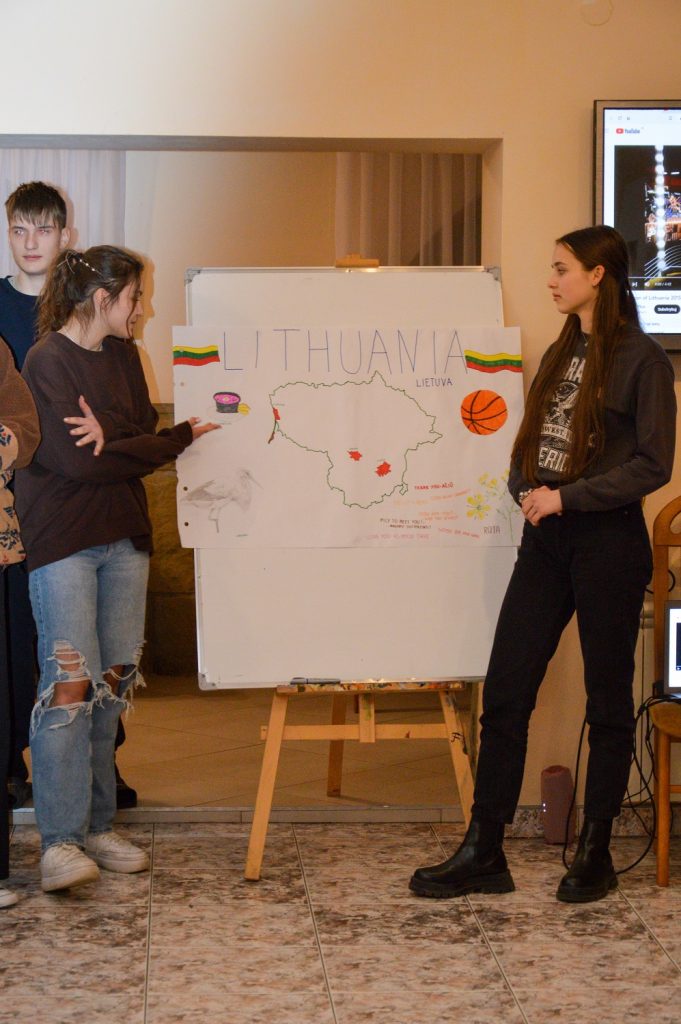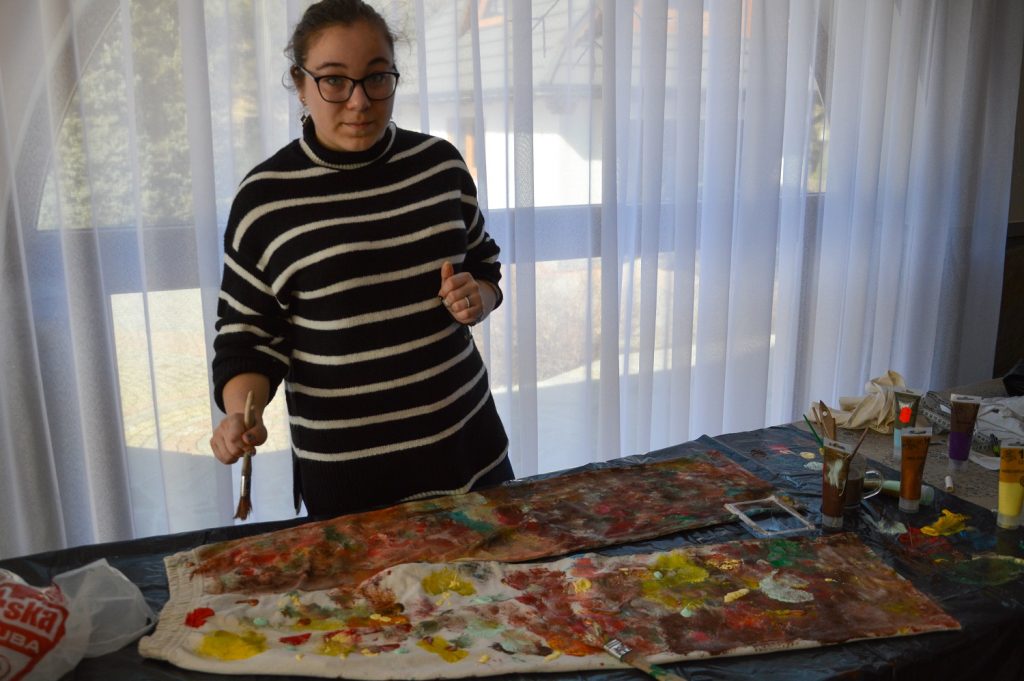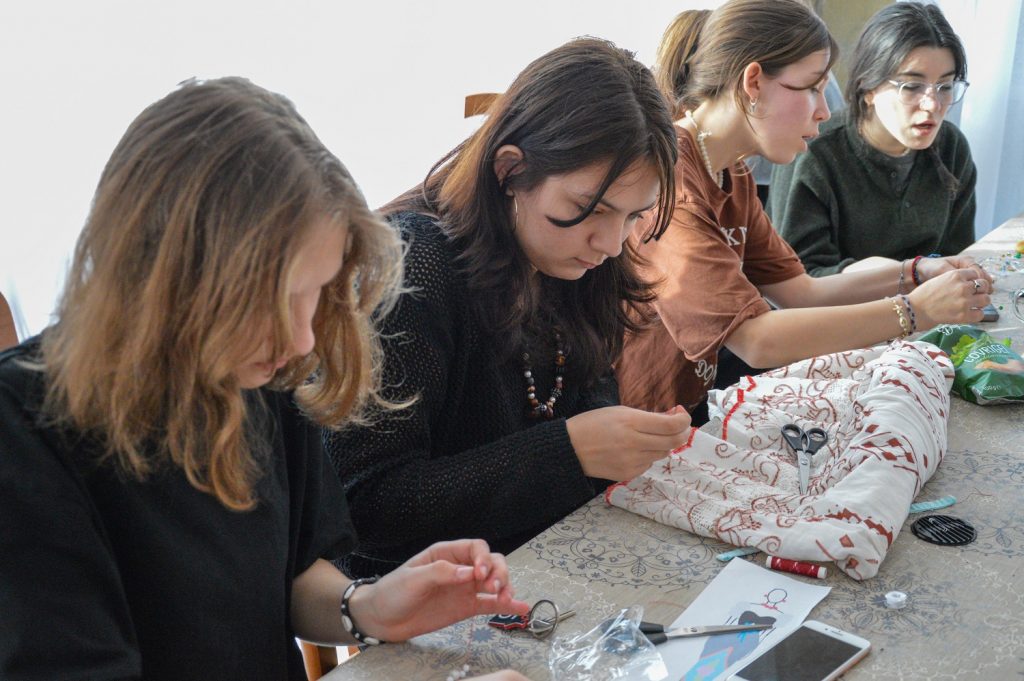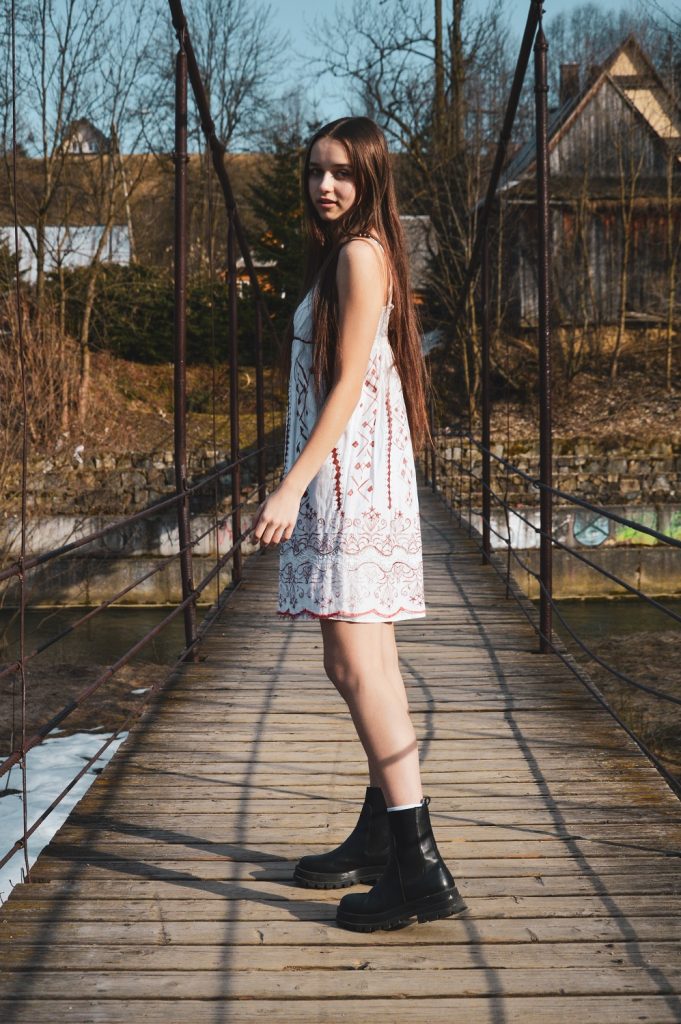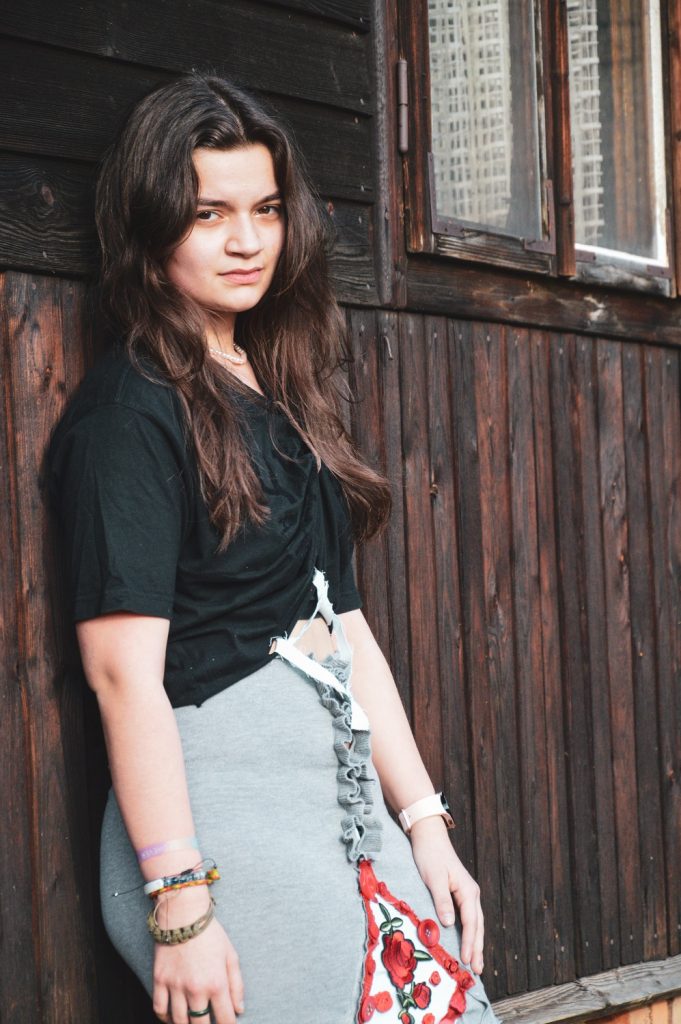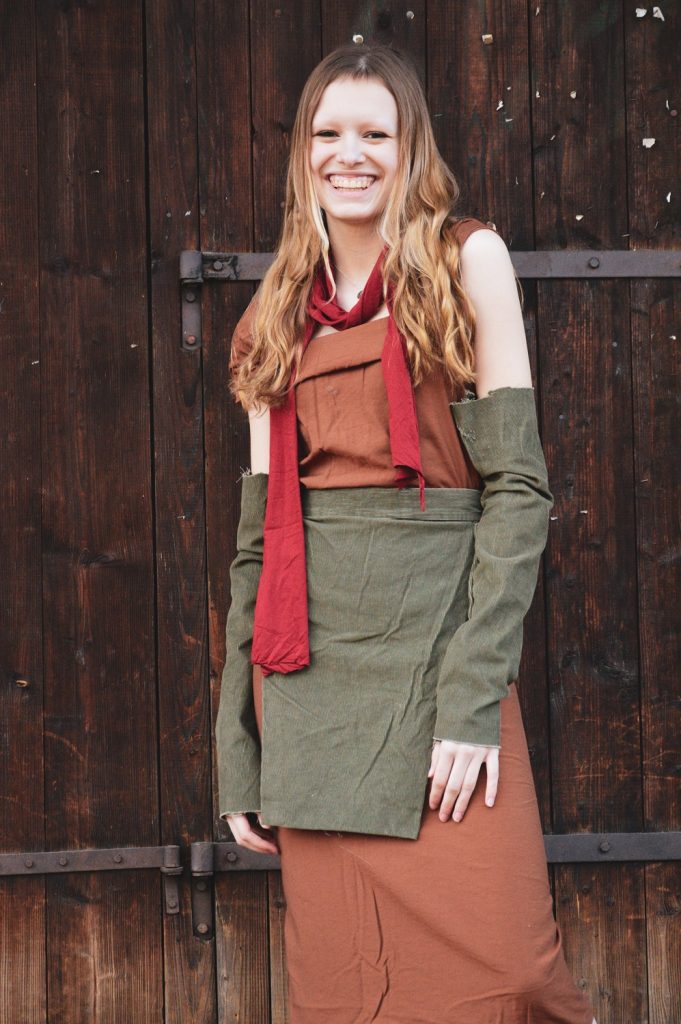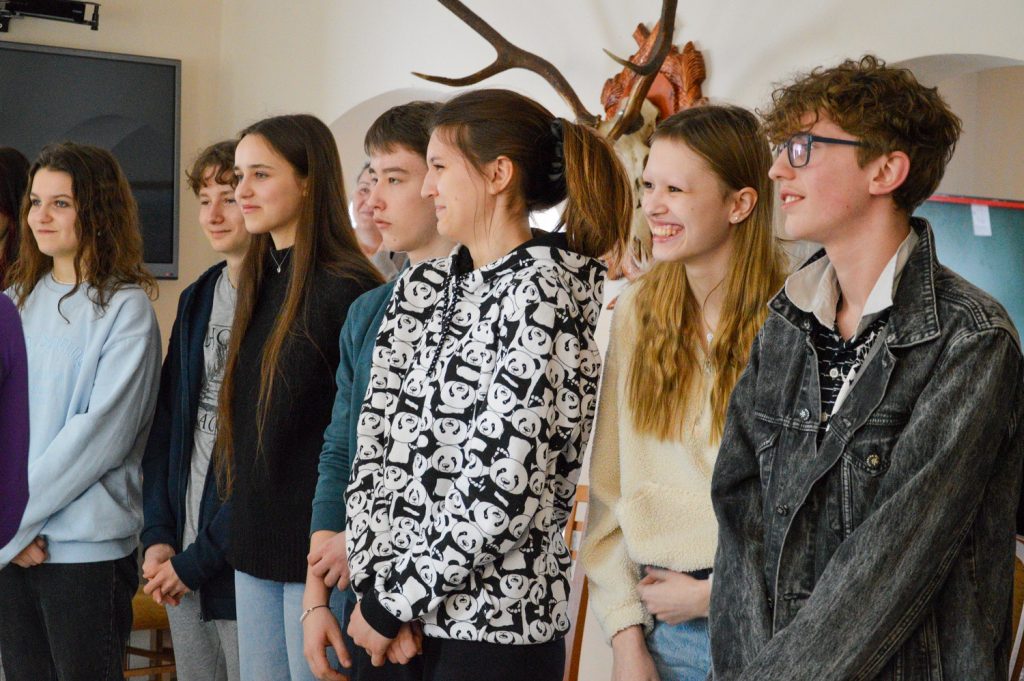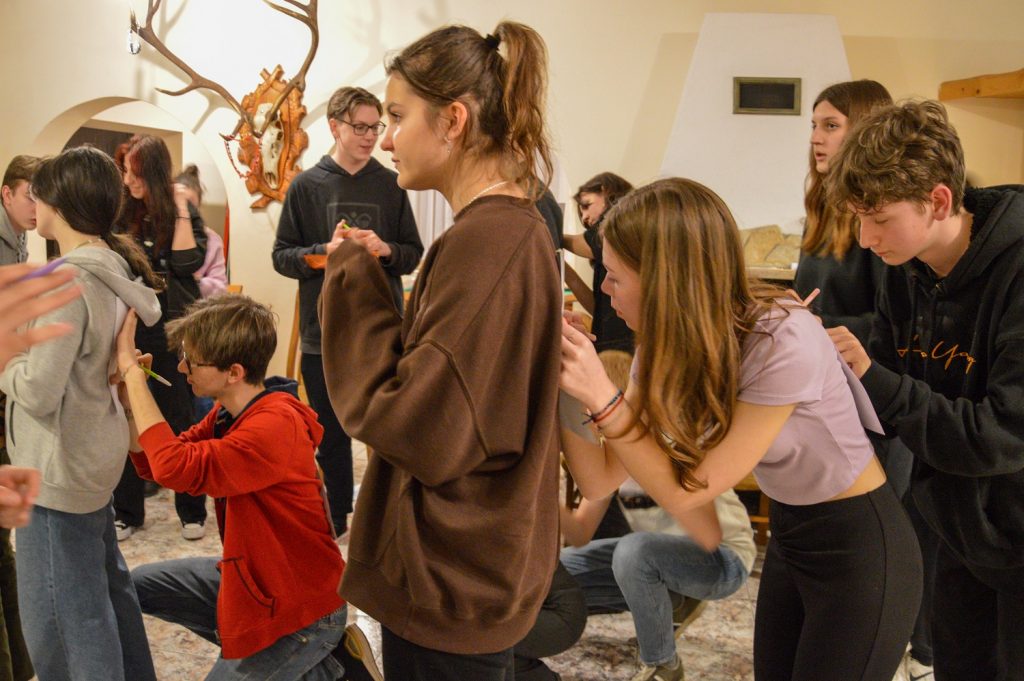Between 13 and 19 of March 2023, our representatives took part in the youth exchange “There is no second-hand world” organized by Fundacja Aktywni w Europie. The project was co-financed under the Erasmus+ programme. Except for our group, the project was attended by youngsters with leaders from Poland and Romania.The meeting took place in Biały Dunajec and was attended by a total of 37 people.
The production of clothes has a negative impact on our planet. Through the implementation of a joint project, we strived to contribute to the care of the Earth. Young people showed how in a simple, creative and innovative way you can give a second life to our clothes or clothes obtained through exchange or purchase in second-hand shops and use them for subsequent seasons, stand out with something unique, create your own trends and be environmentally friendly.
Participants in the creation of new costumes were inspired by classic and traditional designs from the cultures of our countries.
The aim of the project was:
– raising awareness and broadening knowledge about threats to the natural environment and climate, as well as negative consequences resulting from mass production of clothing in the era of growing consumerism;
– expanding and developing competences in the field of ecology, environmental protection and climate change, which will contribute to reducing the buying and throwing away of clothes, in favor of reusing them in a creative way and giving them a second life;
– exchange of experiences and good practices, as well as the development of creativity and innovation by using clothes that are no longer needed and giving them a new, second life, using traditional design;
– education, development and promotion of positive changes and behaviors contributing to the reduction of buying new clothes; altering your clothes/giving them a second life; exchanging clothes or using second hand shops, and thus taking care of the surroundings and the natural environment;
– strengthening cultural identity by broadening knowledge about the traditional design of our countries; As part of the first activity, the participants of the youth exchange created the code of the international meeting, then they carried out the activity “expectations and fears”. Another element of the workshop were games and activities with names, as well as integration and team-building activities. Thanks to the activities, the participants recorded the names of their peers, got to know each other better, broke the barriers of shyness, integrated with each other, created a friendly and positive atmosphere, and broke the ice in communicating in English.
As part of many thematic activities, project participants:
– presented the results of short interviews they conducted during the preparations, asking their peers what is more important to them – the good of the Planet or their own good and satisfaction of their consumer needs; and have they ever thought about how a given item is produced while shopping?
– raised the subject of threats to the natural environment and climate, as well as negative consequences resulting from the mass production of clothing in the era of growing consumerism; They presented statistics and data related to the production of clothing, as well as interesting facts that should make us not only reflect and think but also take specific actions and make changes in our functioning;
– referred to traditional and folklore patterns rooted in our cultures. Each group presented the most beautiful and popular patterns, referring to their history, meaning, or symbolism;
– worked on ideas on how they can contribute to better care for the environment by applying Zero Waste principles;
– discussed how to encourage young people to reduce their clothing purchases and use more ecological alternatives (exchange, shopping in second-hand shops, altering their old clothes), how to make conscious purchases when they are necessary;
During the project, participants from Poland, Romania, and Lithuania worked on creating outfits made of clothes that were no longer needed or worn out. They created their own designs, based on traditional and folkloric patterns of our cultures, and then created outfits made of clothes that are no longer needed or used. Creating their own costumes, which were inspired by traditional and folklore patterns present in our cultures, required the participants not only focus and accuracy but also creativity and innovation.
Young people also prepared and conducted a photo shoot. The photos show clothes created by young people. During the international meeting, there was also an online meeting and fashion show with the participation of our peers from various European countries, during which original clothes were presented, inspired by traditional and folklore patterns from our countries. As part of the presentation, the participants also told how they made their projects and what exactly inspired them. The meeting and online fashion show were a great opportunity to share the results, exchange experiences, and increase the reach of the project and the Erasmus + program.
One of the many elements of the youth exchange were national evenings, prepared by the participants of the international meeting “There is no second-hand world”. Each team presented its country, traditions, and customs in a creative and interesting way. Thanks to the national evenings, participants of the youth exchange deepened their knowledge of foreign cultures, broadened their horizons, and became more open and tolerant.
The youth exchange ended with an evaluation of the whole meeting, during which the participants assessed its individual elements and what they learned during the few days spent together. Each of the participants received a Youthpass certificate – as confirmation of participation in the project. The international project was an opportunity for everyone to broaden their competencies and interests, but also for many people – the first experience of working in an international environment.
